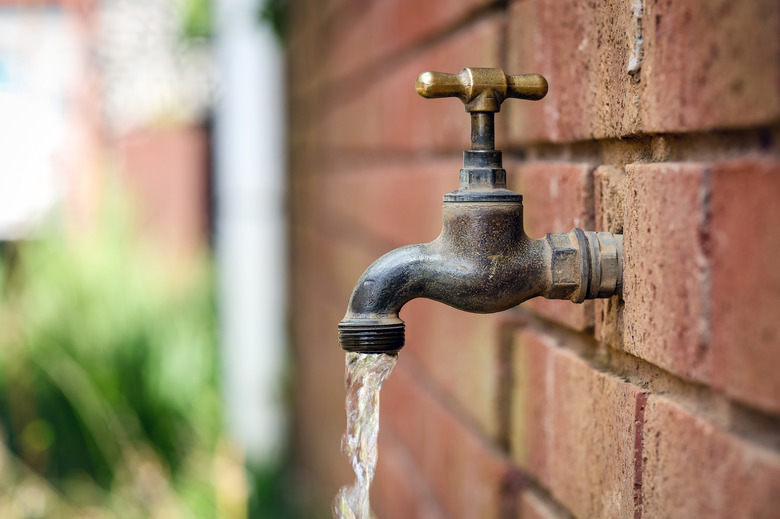How To Remove An Outdoor Faucet Handle
We may receive a commission on purchases made from links.
An outdoor faucet, also known as a spigot or garden hose bib, is the simplest type of faucet. Inside the faucet body is a screw thread that compresses a washer onto the valve seat to stop the flow of water when you turn the handle. Compression faucets of this type are reliable and long-lasting, but they do inevitably leak. When that happens, you can usually do the repair yourself, but it means disassembling the faucet, and the first step is to remove the faucet handle.
You don't need a complicated set of instructions to remove a compression faucet handle. It's held on by a single Phillips screw, although you might not see it if it's hidden by a cap. After prying off the cap (if there is one) with a flat-head screwdriver, you just loosen and remove the screw, and the handle should slip right off. Sometimes, however, it isn't so easy.
The Handle Is Stuck
The Handle Is Stuck
Because outdoor faucets are, well, outdoors, they get rained on and subjected to sharp changes in temperature, and rust, hard water deposits, and thermal expansion can fuse the handle to the valve stem. You can remove the screw, but the handle itself won't budge.
When this happens, a sharp tap with a hammer may be all that's needed to free the handle, but be careful because the handle can break. If it does, you'll need a hose bib handle replacement. You might also be able to loosen the bond by dousing the handle with boiling water or spraying it with lubricant. When all else fails, you may need a handle puller. It's a corkscrewlike device that anchors on the valve stem and hooks onto the handle, and when you screw down the puller handle, it pulls off the faucet handle.
The Screw Is Stripped
The Screw Is Stripped
The screws on outdoor faucets can also corrode, and when you try to loosen one that has gotten stuck, the screw heads can strip. Your screwdriver slips on the notches and wears them down, and in the end, turning the screwdriver has no effect on the screw.
A screw extractor is a handy tool to keep around the house for such situations. It's a conical drill bit with spiral threads that work in the reverse direction. To free a stuck screw, you first drill a small hole in the screw head and then put the screw extractor in your drill, insert the tip into the hole, and operate the drill in reverse to extract the screw. Be sure to hold the handle firmly with one hand or, alternatively, turn off the water and open the faucet all the way to prevent the handle from turning with the screw.
The Outdoor Faucet Valve Stem Is Stripped
The Outdoor Faucet Valve Stem Is Stripped
When a valve stem strips, the handle may still turn, but it won't open or close the faucet. Alternatively, it may still operate the faucet, but it will fuse to the valve stem. When it fuses, you should be able to remove it using one of the techniques for removing a stuck handle, but after the handle is off, you'll have to replace the valve.
To replace the valve, you need to unscrew the retaining nut holding it into the faucet, but before doing this, be sure to shut off the water. Loosen the retaining nut with a wrench or a pair of slip-lock pliers and then remove it, pull out the valve, and replace it with a new one. Tighten the retaining nut back onto the faucet and then replace the handle. You can reuse the old handle if it's still in good condition.
